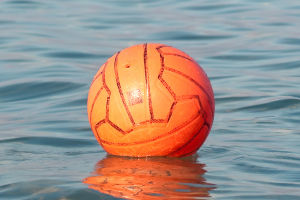Beach volleyball emerged in the 1920s in Santa Monica, California, U.S.A. A decade later, beach volleyball began to spread to Europe.
In the 1940s, Santa Monica began to see men's beach volleyball grand prix tournaments with two players per team.
In the 60s, Santa Monica's attempt to create a professional beach volleyball league failed, but a professional tour was successfully held in France.
Beach volleyball was able to grow rapidly thanks to the media and the influence of stars such as Walsh and May.
In 1996, beach volleyball made it to the Atlanta Olympics thanks to its significant influence.
For the last decade, Brazil and the United States have dominated the world of beach volleyball. Now Australia has its tour, with other countries such as Greece, Germany, and China actively promoting and supporting the sport.
Beach volleyball was included as a competition in the 13th Bangkok Asian Games in 1998. It has evolved from a game activity played on many beaches around the world.
As the name implies, beach volleyball is played on natural native or artificial beaches with two players per team.
Since it entered the Olympics in 1996, beach volleyball has grown rapidly, with amateur and professional associations springing up. Among them, the U.S. and Brazilian teams have always been in the lead.
The World Beach Volleyball Tour is held annually from June to September and attracts a large number of television audiences.
Beach volleyball gained tremendous momentum during the Great Depression of the 1930s when people were walking to the beach to relax.
Beach volleyball has almost the same rules as indoor volleyball. Some of the differences include:
1. The court is 8 meters square in the half court instead of 9 meters square in indoor volleyball.
2. When defending a rebound with an overhand pass, the ball is allowed to stay in the hands for a few seconds.
A player commits a foul if the trajectory of the ball is not perpendicular to the line of both shoulders when completing an offensive stroke with an overhand pass.
It is not a foul if the ball is "held" due to the touch of the ball above the net by both players.
3. One blocking touch is counted as one hit of the team.
4. It is forbidden for a player to hit the ball over the net with his fingers while attacking.
Beach volleyball stipulates that a player may enter the opponent's court from under the net when it does not prevent the opponent from playing.
One of the features of beach volleyball is that players usually put their hands behind their backs and use their fingers to indicate what kind of ball their teammates are going to hit next.

